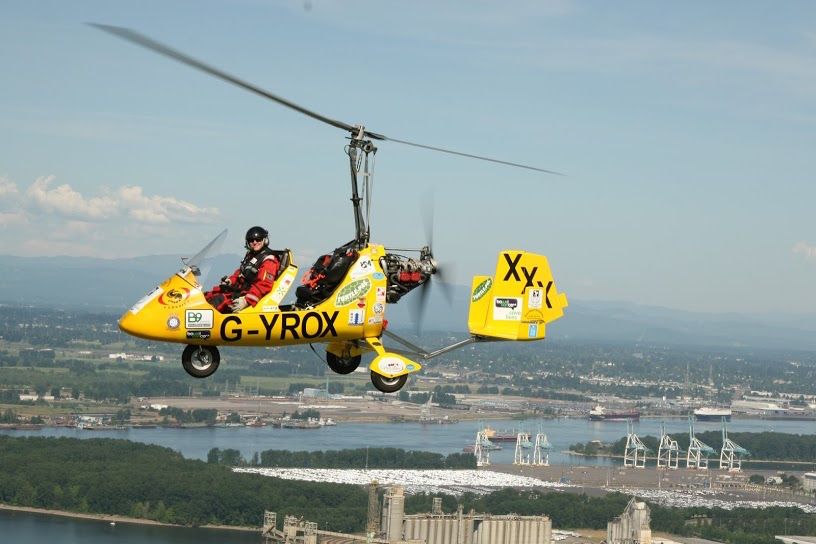Gyrocopter Relaunches on Around-the-World Attempt

A man who is attempting to fly a special aircraft known as a gyrocopter around the world took off today from a town in Oregon, resuming an epic journey that began in 2010.
Featured in films ranging from the James Bond series to "Mad Max," a gyrocopter — also known as an autogyro or gyroplane — looks like a helicopter but flies more like a fixed-wing plane.
Northern Irish aviator Norman Surplus aimed to set a record for the first 'round-the-world gyrocopter flight in 2010. He had to abandon the attempt after reaching Japan, however, because he couldn't get approval to land in Russia. After shipping his gyro to the U.S. West Coast, Surplus will resume his trip today (June 1), when he flies from McMinnville to Tillamook, both in Oregon.
The vehicle has an unpowered rotor that spins freely to create lift, and an engine-powered propeller to provide thrust. [Humanoid Robots to Flying Cars: 10 Coolest DARPA Projects]
"It's like flying a motorbike," Surplus told Live Science. "It's very maneuverable. It does about 90 percent of what a helicopter can do, plus a few things a helicopter can't," he said. It's also very safe, and it can't stall, Surplus added. "If you pull the throttle right back, it goes into a slow descending hover," he said.
Surplus can fly at about 80 mph (130 km/h), at an altitude of about 800 to 1,000 feet (240 to 300 meters). On a typical day, he can fly for about 4 to 4.5 hours, but only during daylight and always in sight of the ground.
Surplus' planned flight spans 26 countries, three continents and more than 27,000 miles (43,000 kilometers), of which 4,500 miles (7,200 km) are over water. In addition to the attempt to set a new record, the flight's goal is to bring awareness to bowel cancer (colorectal cancer), a condition of which Surplus is a survivor.
Sign up for the Live Science daily newsletter now
Get the world’s most fascinating discoveries delivered straight to your inbox.
Surplus began his journey in his hometown of Larne, Northern Ireland, in March 2010, and made his way across Europe, the Middle East and Southeast Asia. But when he reached Japan, his record attempt was thwarted.
The gyro's maximum range required Surplus to make a stop in eastern Russia en route from Japan to Alaska, but Russian officials did not grant permission for him to land there. His vehicle sat in Japan for three years as he attempted to secure permission, but he ultimately had to abandon the record attempt and ship the gyro to the U.S.
Surplus took off today from the Evergreen Aviation & Space Museum in McMinnville, Oregon, where the aircraft was on display over the winter. He plans to fly to Tillamook, Oregon, and then continue on to Portland. From there, Surplus aims to make his way across the country to Maine, then on to Quebec, Greenland, Iceland, the Faroe Islands and the Outer Hebrides, before heading back to Larne. The journey should take about six to seven weeks, he said.
A satellite tracker on the gyrocopter updates the craft's position every 10 minutes. Viewers around the world can follow the gyrocopter's progress online.
Editor's Note: This article was updated at 4:50 p.m. ET on June 1, 2015, to correct Surplus' hometown.
Follow Tanya Lewis on Twitter. Follow us @livescience, Facebook & Google+. Original article on Live Science.












